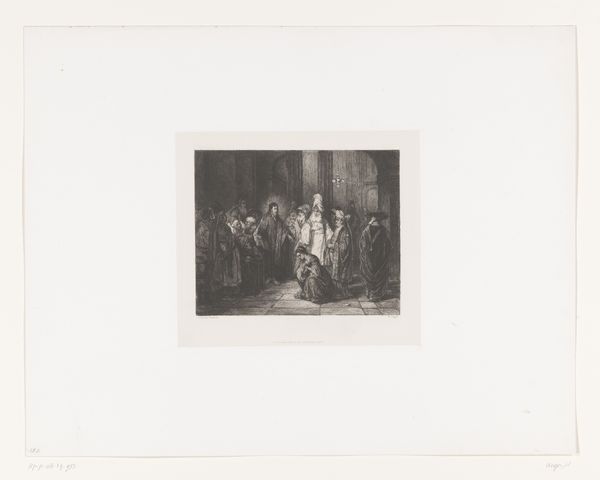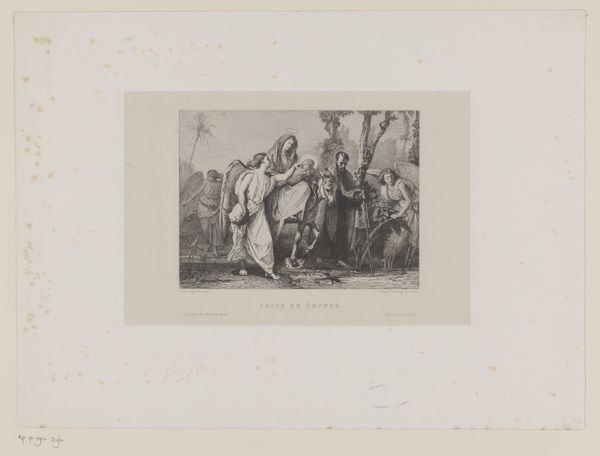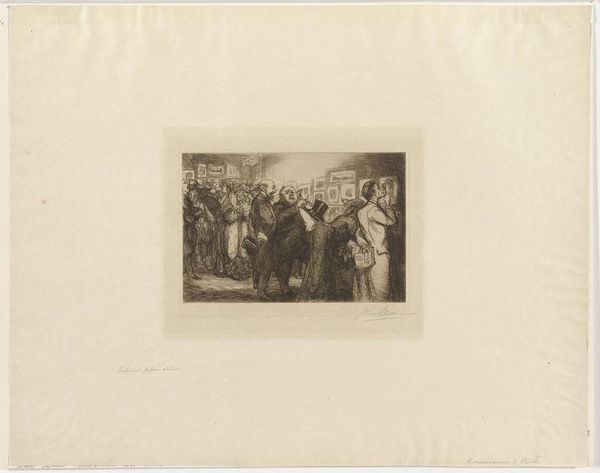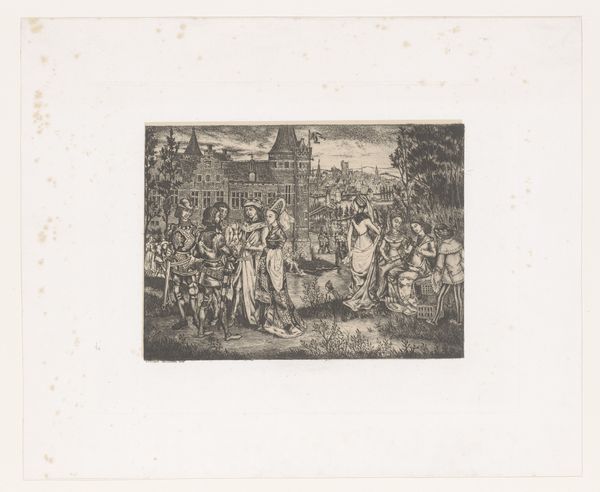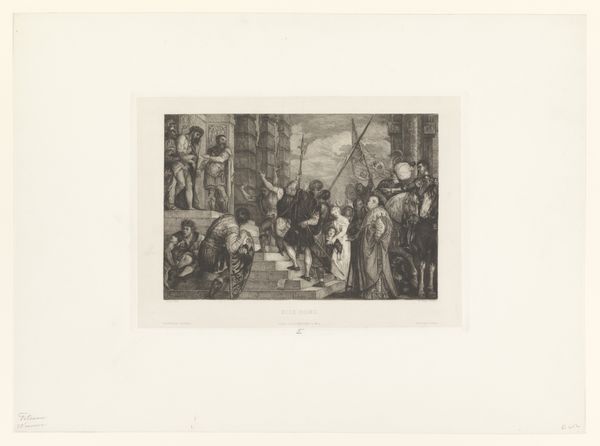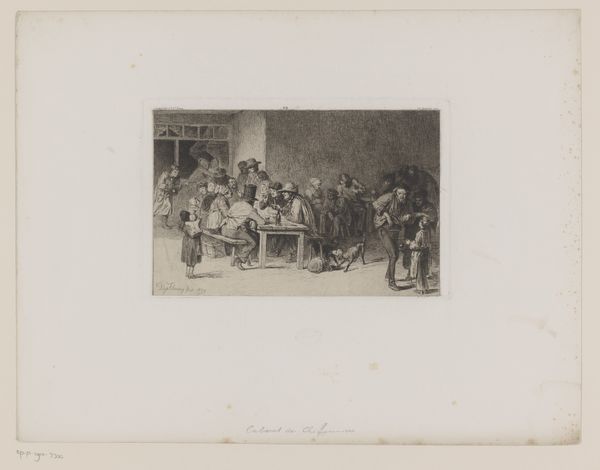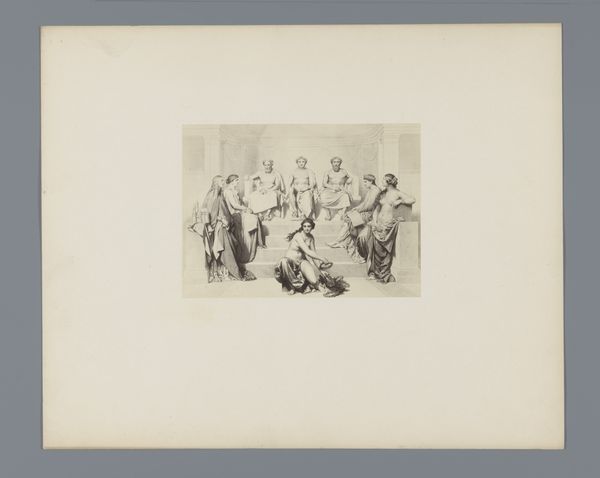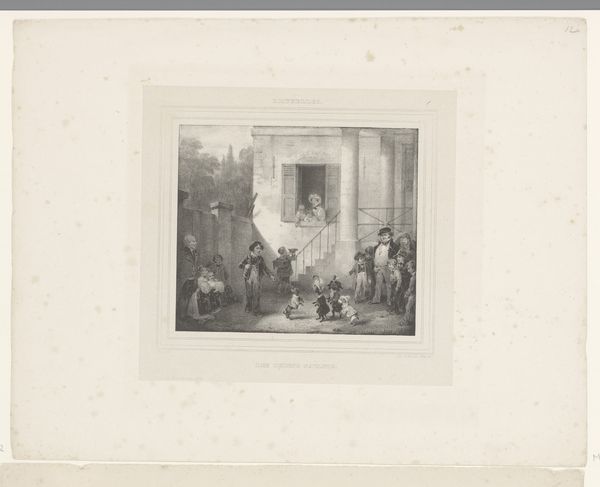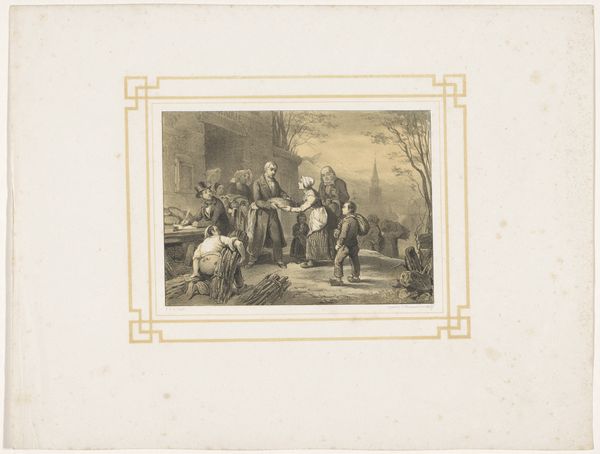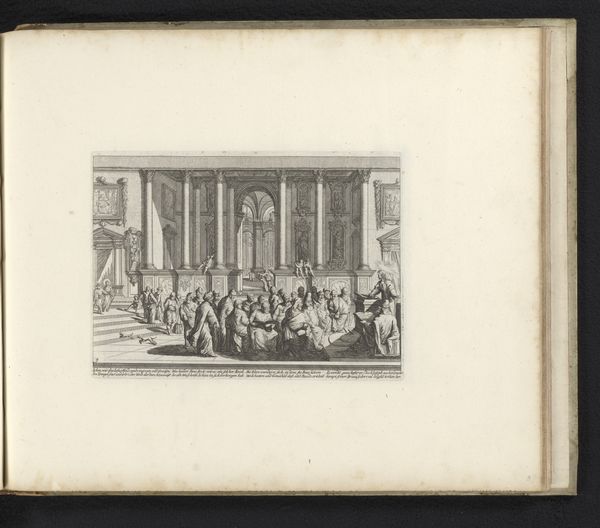
Christus overhandigt de wet aan zijn apostelen 1809 - 1854
0:00
0:00
willemhendrikfranquinet
Rijksmuseum
#
pencil drawn
#
photo of handprinted image
#
aged paper
#
toned paper
#
light pencil work
#
ink paper printed
#
pencil sketch
#
pencil work
#
watercolour illustration
#
watercolor
Dimensions: height 330 mm, width 483 mm
Copyright: Rijks Museum: Open Domain
Editor: This is "Christus overhandigt de wet aan zijn apostelen," or "Christ Delivering the Law to his Apostles," created between 1809 and 1854 by Willem Hendrik Franquinet. It's currently housed here at the Rijksmuseum. It has this fantastic, almost ethereal quality with the toned paper and delicate pencil work. What first strikes you when you look at this piece? Curator: Oh, darling, it’s the light, isn’t it? Not just the tonal variations of the drawing itself but how it plays with the aged paper. I imagine Franquinet, lost in thought, almost dreaming this scene into existence, the scene from some sacred memory or future hope. Look how the light seems to emanate from Christ himself. What do you make of the apostles' expressions? Are they reverent, apprehensive, simply… human? Editor: I see a mix of awe and perhaps a little confusion? There's definitely a weight to the scene. Do you think he was intentionally contrasting the divine with the earthly? Curator: Intentionally? Maybe. Subconsciously, definitely. Art is rarely a conscious act. More often, it is a yearning. Notice the setting, barely sketched, classical architecture fading into landscape. It's as if Franquinet's saying, "This moment transcends place." The architecture seems to imply permanence while the misty hills speak to the vast, incomprehensible plan. Is there tension in the work? Editor: Definitely, between the grounded figures and that almost dreamlike background. I hadn't considered that reading of the setting. Curator: That's what art is all about, my dear – seeing what others don't, feeling what others might miss. And now, having seen together, do you think we've solved it? Unlikely. It's delicious though isn't it? To see if only for a moment! Editor: Absolutely. It’s a real joy discovering new angles, especially with pieces that hold so much history and potential meaning.
Comments
No comments
Be the first to comment and join the conversation on the ultimate creative platform.
